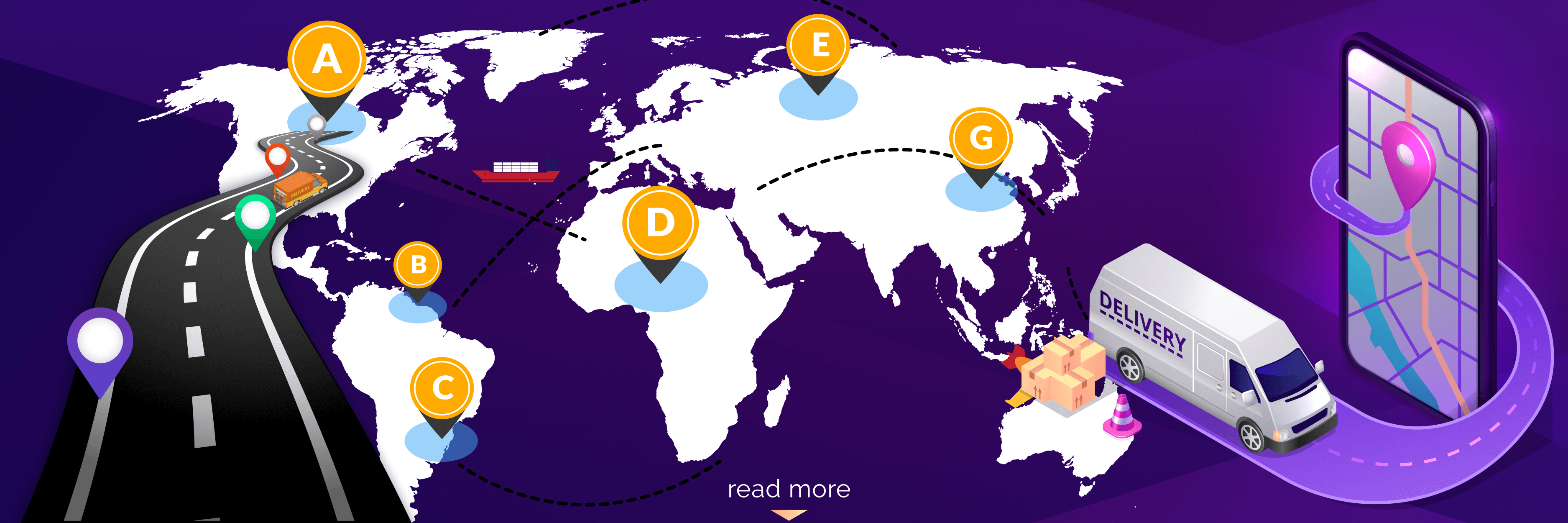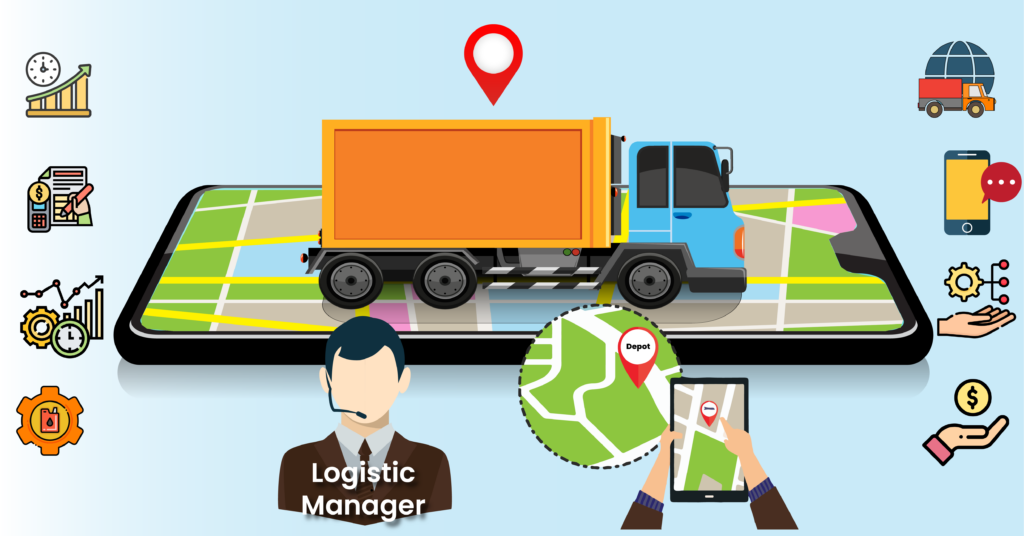Geofencing and Its Benefits for Fleet Management

Most Fleet owners and organizations believe that a GPS-enabled fleet management solution is only useful for tracking the whereabouts of their vehicles. While this is one of the most important features of fleet management software solutions, it is far from the sole benefit. It’s only the tip of the iceberg in terms of what you can do. An advanced vehicle tracking solution can not only improve ROI but also save fuel, ensure better vehicle health and so much more. When you start digging into the capabilities of GPS-enabled technology with your fleet, you’ll be amazed at what you can do. Geofencing is one of the most powerful features of fleet management software, but it’s also one of the most underutilized. This technology has a variety of benefits that can help you enhance fleet safety, save expenses, and boost productivity.
Because of these factors, it’s a technology worth studying and figuring out how to include in your system. You’ll wonder how you ever managed your fleet without it after you’ve done it. In this blog, we’ll explore what is geofencing and how it helps in Fleet Management.
What is Geofencing?
Geofencing solutions have proved extremely beneficial to fleet management firms. Here’s how fleet managers may boost their business by utilizing the geofencing feature.
The geofence function in GPS tracking allows you to build a virtual perimeter and designate a safe or unsafe geographic region. You’ll be notified whenever one of your fleet vehicles enters or exits this boundary. Virtual fences can be as tiny as your backyard or as large as the entire country, depending on the managers’ preferences. They can also create an extended zone, similar to that of a roadway. Aside from these notifications, fleet managers have a wide view of their fleet’s position and activity inside the authorized zone.
Geofencing has a number of advantages, including improving vehicle safety, lowering expenses, and increasing overall productivity. This virtual barrier feature is proven to be a boon for safety with the expanding usage of geofence-enabled GPS trackers in the fleet market, including school buses, private taxis, movers and packers, rental automobiles, and more.
How does it help fleet management?
Geofencing solutions have proved extremely beneficial to fleet management firms. Here’s how fleet managers may boost their business by utilizing the geofencing feature.

1. Exceptional performance
Geofencing is used by fleet managers to improve the operation of their fleet vehicles. Turnaround times (TAT), operating costs, fuel expenditures, comparative vehicle efficiency analysis, and route cost analysis are all examples of data that may help you improve performance.
2. It is time-efficient
Setting geofences around common stopping points for truckers, such as loading and unloading zones, warehouses, and rest stops, enables non-verbal communication and time savings.
3. Save money on operations
You may save money by using geofencing. Geofencing can help you save money on administrative expenditures by removing the need for micromanagement, handling several phone calls, and other manual monitoring tasks. By lowering such expenditures, fleet managers will be able to focus more on key company activities.
4. Determine the precise hours of operation
A lot of fleet companies pay their drivers hourly. They may automatically track their working hours, thanks to geofencing technology. The fleet management can keep track of their working hours and offer you a detailed log using geofenced perimeters. It includes information such as the start time of drivers’ shifts, total time on the job site, total driving hours, and more.
5. Payroll administration
Payroll processing is aided by critical data. The payment to the drivers is disbursed by the HR and finance departments based on what they are entitled to. They can compute payroll with precision without having to deal with paperwork or double-check manual records.
6. Adherence to the route and fuel savings
By designating a specific place of interest, you can ensure that your fleet vehicles stay on track. It has the potential to increase route adherence and save money on fuel. Additionally, ensuring that fleet cars adhere to predetermined routes reduces wear and tear, cutting maintenance costs.
7. Improved planning
Geofencing enables you to organize and schedule operations more efficiently. Geofencing and GPS data provide you with the actual position of the vehicles, allowing you to estimate their ETAs and change trips, deliveries, and other operations accordingly.
8. Improved Security
Geofencing ensures asset security, which is one of its advantages. The possibilities of theft are reduced to a bare minimum since you receive fast notifications when your cars depart from the allowed bounds. You’ll get a real-time geofenced alert if the cars enter an area where they’re not meant to be. If you believe your car and driver are in danger, you can look for the true cause of the deviation and take immediate action.
Fleet managers were already using GPS monitoring to find their cars in real-time. Geofencing provides fleet managers with a wealth of data and information about their cars.
With Asti Infotech’s Vehicle Tracking and Monitoring System (VTMS), you get all the capabilities of a robust vehicle tracking solution, along with the geofencing feature that entails a lot of additional benefits. To learn more about VTMS and its advanced capabilities to improve your fleet performance, contact us or schedule a demo right away!
FAQ’S
Beyond vehicle tracking, what other benefits can a GPS-enabled fleet management solution offer to fleet owners and organizations?
While vehicle tracking is a crucial feature, GPS-enabled fleet management solutions offer a range of additional benefits. These include improved ROI, fuel savings, better vehicle health monitoring, enhanced safety measures, and increased productivity through features like geofencing and advanced analytics.
What exactly is geofencing, and how can it benefit fleet management operations?
Geofencing is a technology that creates virtual boundaries around specific geographical areas. Fleet management software utilizes geofencing to define areas of interest and trigger automated actions when vehicles enter or exit these zones. This feature enhances fleet safety by providing alerts for unauthorized vehicle use, improves expense management by optimizing route planning, and boosts productivity through efficient task allocation.
How does a GPS-enabled fleet management solution contribute to fuel savings for fleet owners?
GPS-enabled fleet management solutions help optimize fuel usage by providing real-time data on vehicle location, speed, and idle time. By analyzing this information, fleet managers can identify inefficient driving behaviors, such as excessive speeding or unnecessary idling, and implement strategies to reduce fuel consumption, ultimately leading to significant cost savings.
Can a GPS-enabled fleet management solution improve overall vehicle health and maintenance?
Yes, GPS-enabled fleet management solutions offer features for monitoring vehicle health and scheduling maintenance tasks. By tracking vehicle diagnostics and performance metrics, fleet managers can proactively identify maintenance needs, schedule preventive maintenance, and address potential issues before they escalate. This proactive approach not only extends vehicle lifespan but also reduces the risk of costly breakdowns.
How can fleet owners ensure they are maximizing the benefits of GPS-enabled fleet management technology?
To maximize the benefits of GPS-enabled fleet management technology, fleet owners should explore all available features and functionalities, including geofencing, advanced analytics, and integration with other systems. Additionally, continuous training and education for fleet managers and drivers on utilizing these technologies effectively are essential to realizing the full potential of fleet management solutions.
Quick Read: Why an Advanced Fleet Management Solution is the Shortest Route to Cutting Operational Costs?